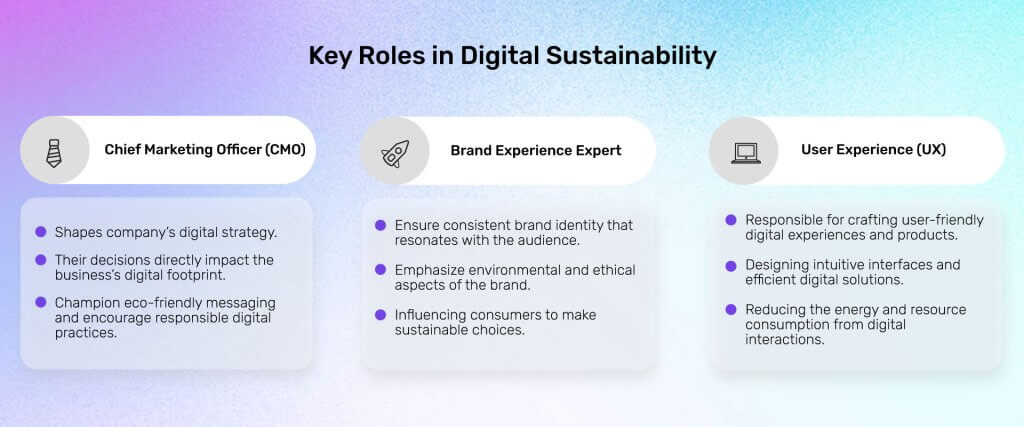
Reducing the data we generate and store is crucial for digital sustainability. How we design and develop digital products and services plays a significant role. However, it can be confusing to understand the roles of a CMO, Brand Experience, or UX in this digital context.
In digital sustainability, the roles of key individuals and teams are more intertwined than they initially seem.
Sustainability isn’t just a buzzword in the context of environmental concerns; it also extends to the digital realm. With the ever-growing consumption of digital resources and data, we must consider making our digital practices more sustainable.
Digital sustainability, according to Mighty Bytes, is the process of applying social, economic, and environmental stewardship principles to digital products, services, and data delivered via the internet. It encompasses various aspects of responsible and eco-friendly digital practices. It’s about reducing the negative environmental impact of our digital activities and ensuring that our digital ecosystems are healthy and resilient.
One of the fundamental aspects of digital sustainability is energy efficiency. Data centers, cloud computing, and the vast network of servers that power our digital world require significant amounts of energy. We must adopt energy-efficient technologies and practices to make digital sustainability a reality.
Reducing the data we generate and store is crucial for digital sustainability. It not only lowers storage and processing requirements but also reduces energy consumption.
How we design and develop digital products and services plays a significant role in digital sustainability. Sustainable design principles can lead to more efficient and eco-friendly solutions.

Electronic waste (e-waste) is a growing concern. Digital sustainability involves responsible disposal and recycling of electronic devices and components. Proper recycling of electronic devices prevents harmful materials from ending up in landfills and promotes the reuse of valuable resources.
To make digital sustainability a reality, educating individuals and organizations about the environmental impact of their digital practices is essential. Promoting digital literacy can help people make informed choices. Training programs and awareness campaigns can help individuals and businesses understand how their digital activities affect the environment.
In an article by Forbes, digital technologies and data are called to be powerful tools to fight climate change and become more sustainable. By prioritizing efficient digital orientation and sustainability, companies can not only improve their own bottom line but also contribute to a brighter future.
Digital sustainability is about reducing the environmental impact of our digital practices. It involves energy efficiency, data minimization, sustainable design, responsible e-waste management, and digital literacy. Adopting these principles can make our digital world more sustainable and eco-friendly. It’s a collective effort that requires individuals, businesses, and policymakers to work together to build a more sustainable digital future.
